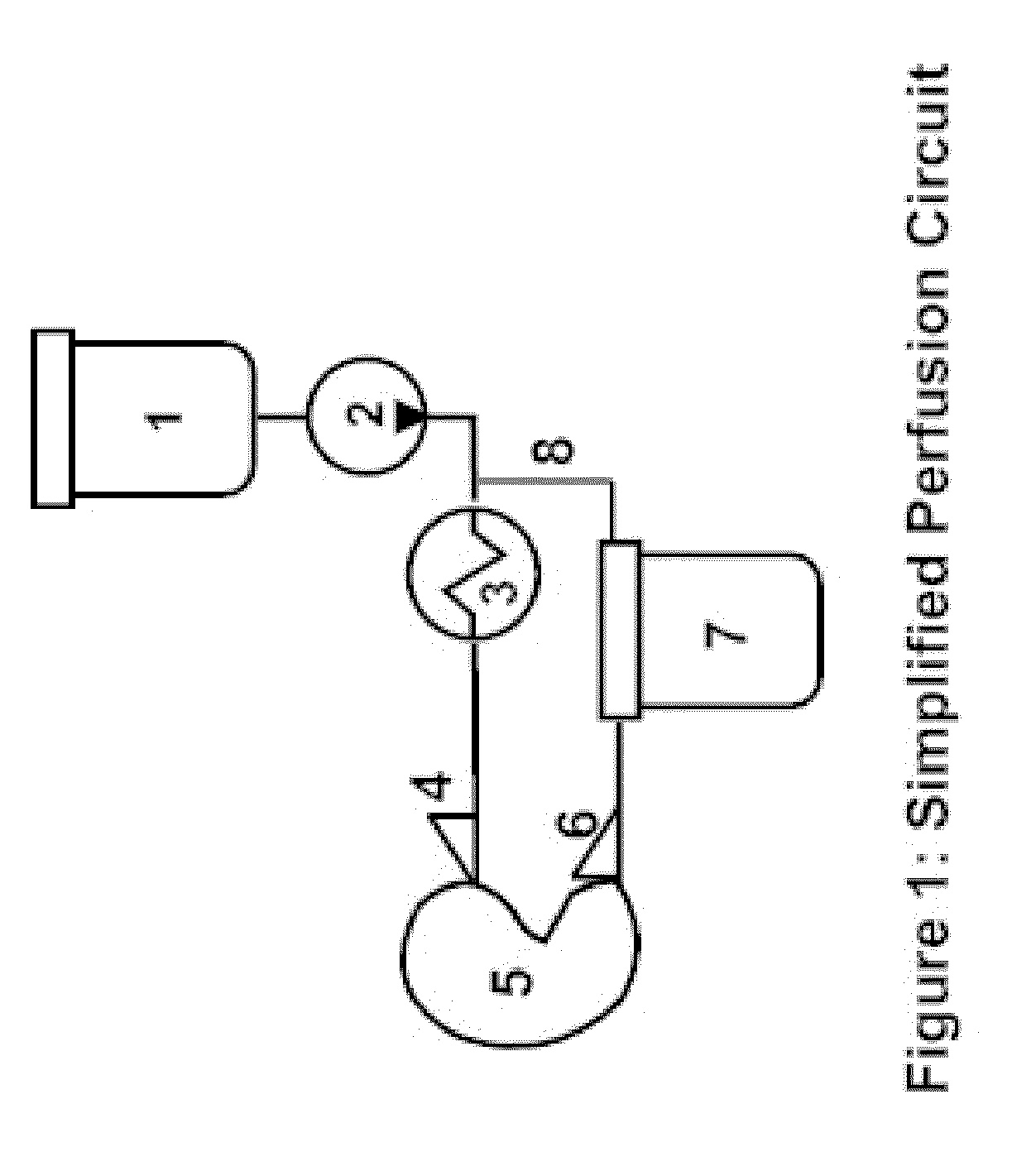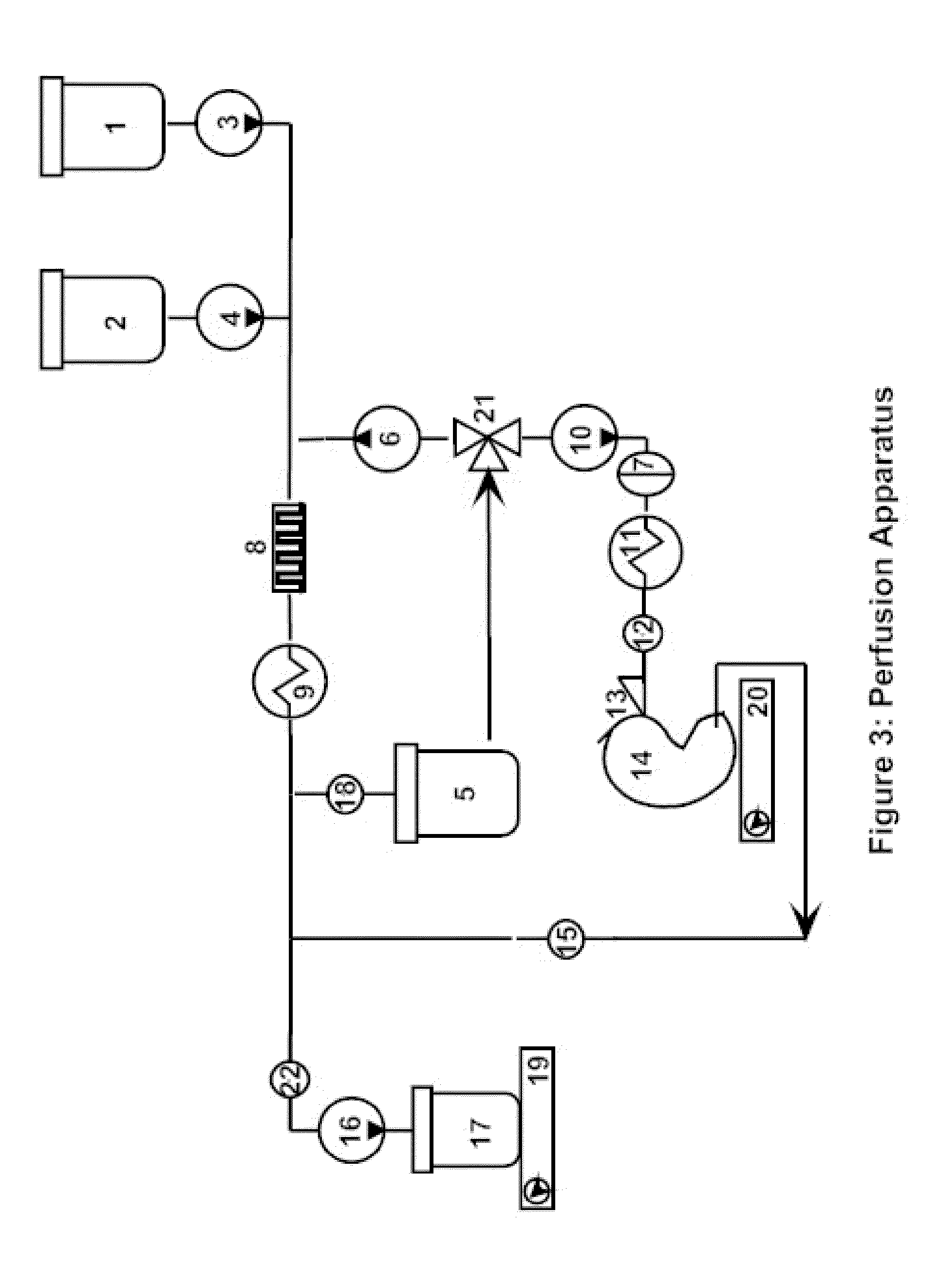Method and apparatus for prevention of thermo-mechanical fracturing in vitrified tissue using rapid cooling and warming by persufflation
a technology of thermomechanical fracture and rapid cooling, applied in the field of cryopreservation devices and methods, can solve the problems of inability to preserve transplantable organs, inability to extend the storage time to weeks or months, and inability to achieve the preservation of transplantable organs, etc., to achieve rapid cooling of biological systems, increase cooling and/or warming rates, and reduce the effect of cryoprotectant toxicity
- Summary
- Abstract
- Description
- Claims
- Application Information
AI Technical Summary
Benefits of technology
Problems solved by technology
Method used
Image
Examples
Embodiment Construction
[0029]Embodiments of the invention are now described and illustrated in the accompanying drawings, instances of which are to be interpreted to be to scale in some implementations while in other implementations, for each instance, not. In certain aspects, use of like or the same reference designators in the drawings and description refers to the same, similar or analogous components and / or elements, while according to other implementations the same use should not. According to certain implementations, use of directional terms, such as, top, bottom, left, right, up, down, over, above, below, beneath, rear, and front, are to be construed literally, white in other implementations the same use should not. The present invention may be practiced in conjunction with various cryoprotection and vitrification systems and other techniques that are conventionally used in the art, and only so much of the commonly practiced process steps and features are included herein as are necessary to provide...
PUM
 Login to View More
Login to View More Abstract
Description
Claims
Application Information
 Login to View More
Login to View More - R&D
- Intellectual Property
- Life Sciences
- Materials
- Tech Scout
- Unparalleled Data Quality
- Higher Quality Content
- 60% Fewer Hallucinations
Browse by: Latest US Patents, China's latest patents, Technical Efficacy Thesaurus, Application Domain, Technology Topic, Popular Technical Reports.
© 2025 PatSnap. All rights reserved.Legal|Privacy policy|Modern Slavery Act Transparency Statement|Sitemap|About US| Contact US: help@patsnap.com



